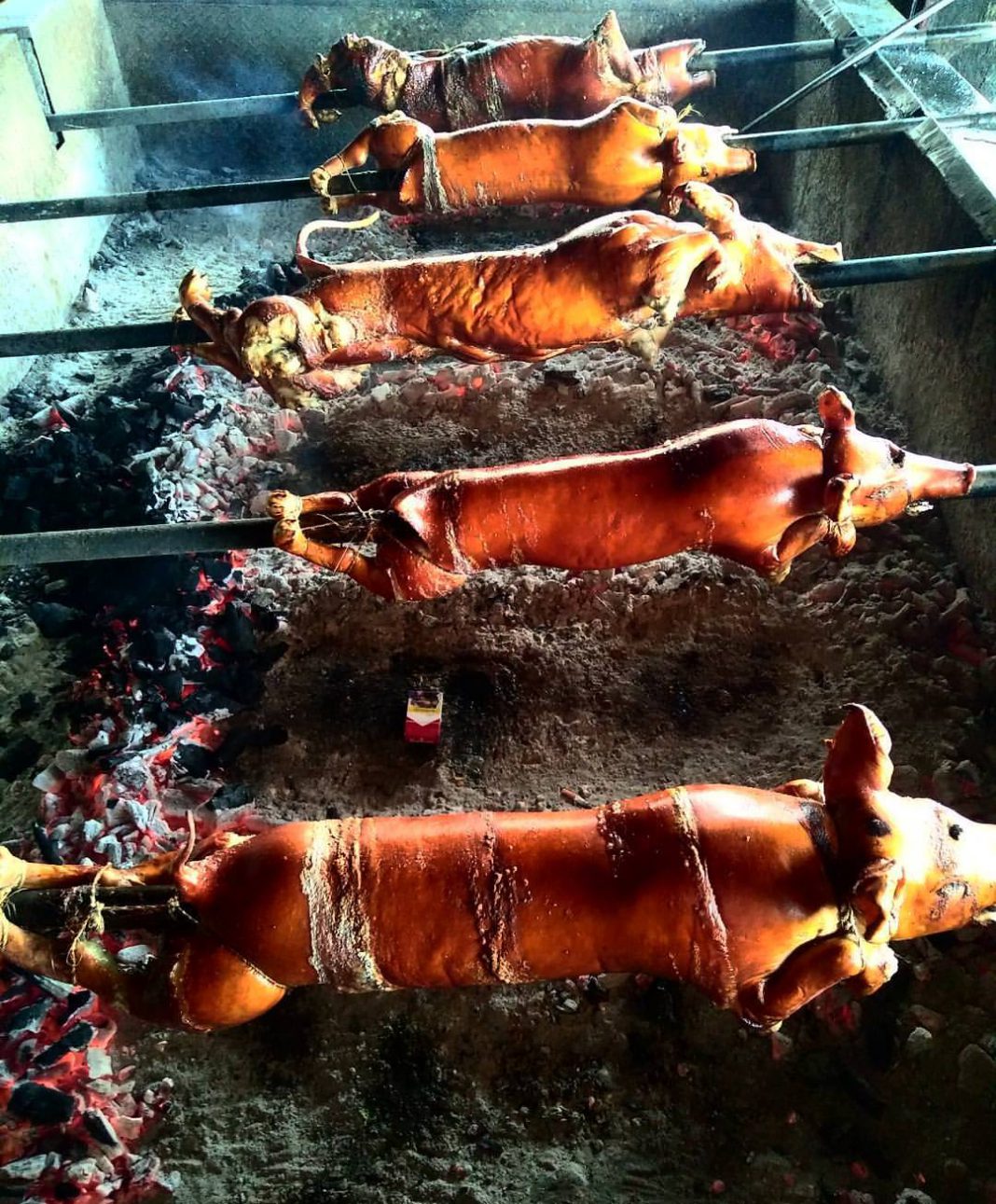By Dr. Rebekka Volmer
Perhaps, not so many people know that the love for pork in the Philippines traces back 5000 years ago. And as time goes by, various food preparations were created using pork, and the star of them all is the “lechon”.
This tender and juicy white meat surrounded by a crackling crust of amber skin is the signature experience of enjoying lechon. Since the name is Spanish, it was often said to be brought to the Philippines by the Spaniards. However, the practice is typical for Austronesian people and was spread with the people into the Southeast Asian archipelago. The dish declared to be the national dish can be found in countries among others such as Spain, Cuba, Germany, Indonesia. However, lechon is associated with the Philippines.
Archaeological studies from the University of the Philippines revealed that eating pigs already started way before the colonial times. According to a study headed by Dr Victor Paz, early hunter-gatherers in Palawan were developing the taste for pig after a long period hunting mainly on deer by 12,000 – 10,000 years ago. In the archaeological site Ille Cave, it can be seen that people were shifting from deer by around 5000 – 4000 years ago: suddenly the main prey was pig. According to Dr Philip Piper from the Australian National University and specialist for early human diet in Southeast Asia, this shift is visible all over the Philippines.
These pigs were wild pigs. Oldest domestic pigs in the Philippines, are 4,000 years old. They can be found in the archaeological site Nagsabaran in Northern Luzon. A study by Dr Noel Amano, a Filipino archaeologist from the Max Planck Institute, revealed that people in Luzon were hunting the Philippine warty pig by that time, but started already keeping domesticated pigs. These were introduced by the Austronesians and were spread by the Austronesian Expansion to Island Southeast Asia.
In Indonesia, though, the spread of Islam in Indonesia had major impacts on Indonesian cuisine. The pork was replaced by kambing the goat. Only in the Hindunese people in Bali, as well as Christian communities in Sulawesi still, serve “babi guling” – the lechon in Bahasa Indonesia.
In the Philippines, though, the love for pork is ongoing for more than 4000 years. The continuous tradition and experimenting with the lechon recipe have turned the Philippine lechon into the best lechon in the world. There are two variants of lechon: the Visayan lechon is stuffed with scallions, bay leaves, black peppercorn, garlic, salt and lemongrass or leaves from native Citrus trees. Therefore only a light dipping sauce such as vinegar or silimansi is served. The Luzon lechon on the other hand counts on the principle “less is more” – it has no stuffing at all but comes with a hearty, thick liver sauce.
It is interesting to know that the lechon paella, a roasted pig stuffed with paella was a product of the creative mind by the country’s youngest lechonera back in her time, and now dubbed as the “Lechon Queen” of the Philippines, Mrs. Lydia De Roca, who was then at her tender age of only 12 years old but was already selling along the sidewalk beside Baclaran Church. To date, their famous lechon remains as the country’s “celebrity lechon” having been tried, liked and tasted by famous people including the first James Bond, Sean Connery, various Filipinos actors and actresses, world leaders and even the old hotels in the Philippines.
The secret of the Philippine lechon, though, is the pig itself. Intensive mass animal farming and hormone forced fast growth in animals might satisfy the hunger for over-efficiency of the Western countries. However, the quality and flavor we need to nourish our body and soul can only be met by careful and more natural animal husbandry. The profound love for pork is reflected in the taste of Philippine lechon. When I tried the Philippine pork for the first time, I was amazed by its richness and addictive flavor which I never experienced before.
Lechon meanwhile became “grown-up” – instead of the suckling pigs, often grown pigs are roasted to meet the cravings of all your guests: expressing hospitality and generosity of the Philippine culture. The all-time favorite fiesta food became a deep-seated part of the Philippine cuisine and having a lechon-experience became a must for every visitor of the Philippines.














